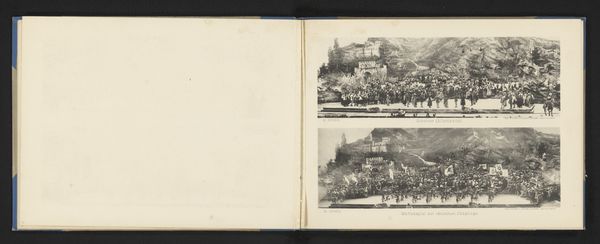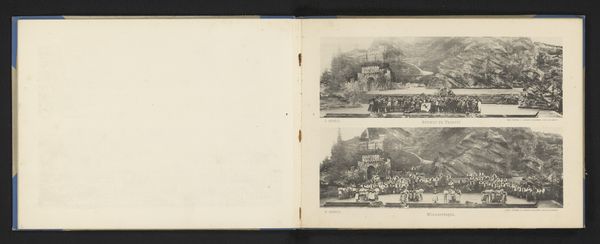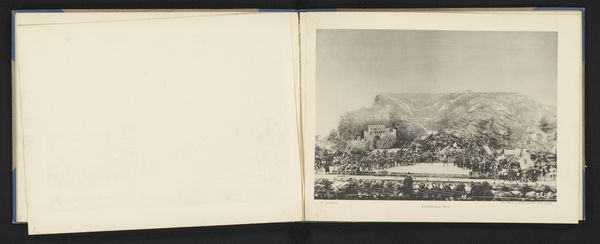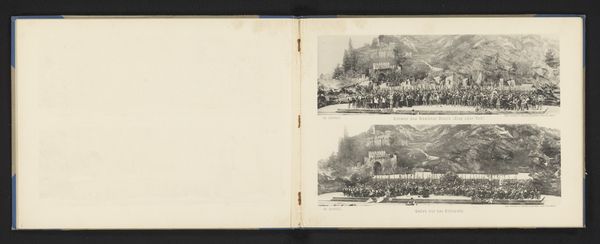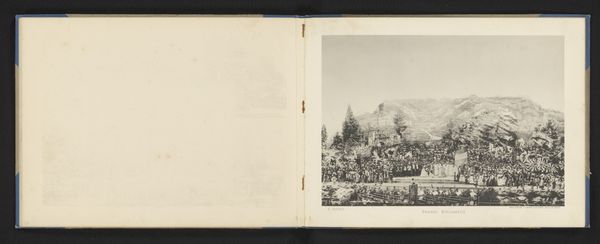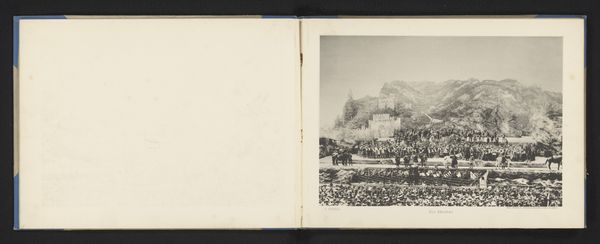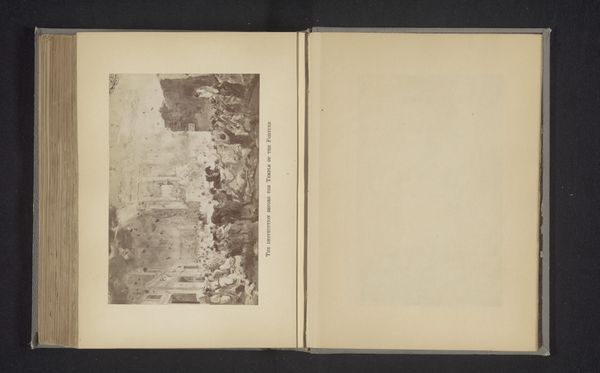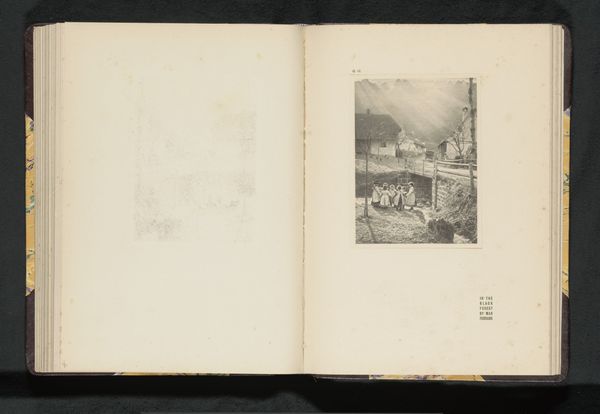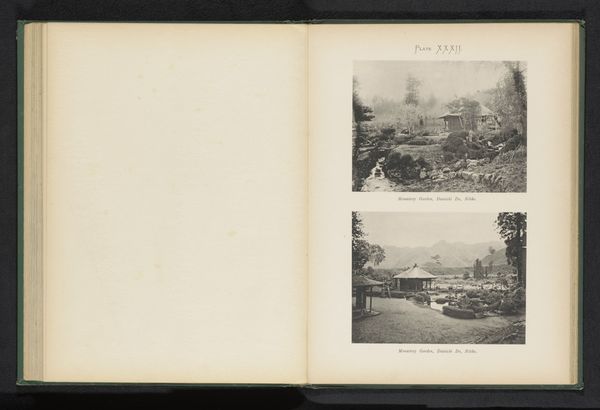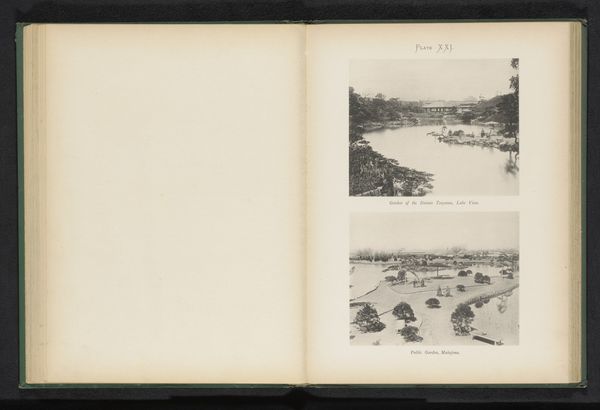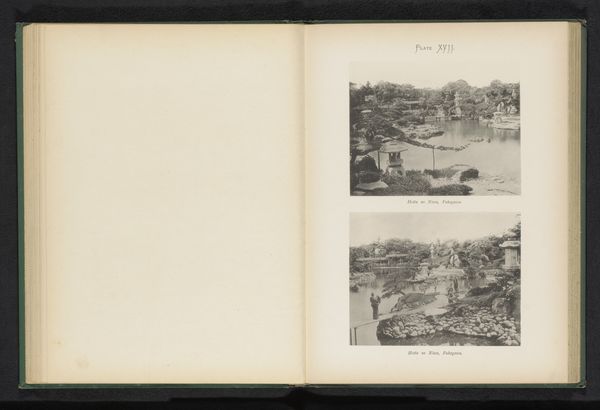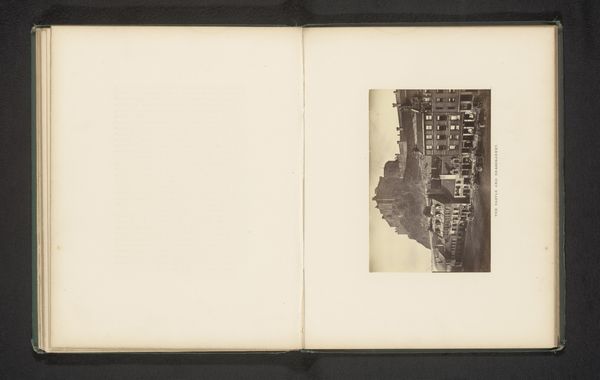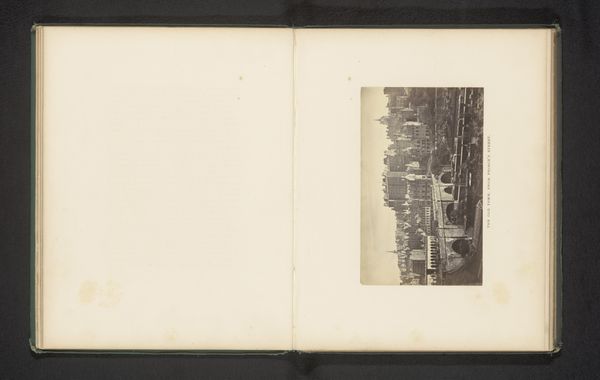
Gezicht op een opvoering en een kinderkoor tijdens de Calven-Feier te Chur before 1899
0:00
0:00
print, photography
#
still-life-photography
# print
#
landscape
#
photography
#
genre-painting
#
history-painting
Dimensions: height 220 mm, width 295 mm
Copyright: Rijks Museum: Open Domain
Editor: This is "Gezicht op een opvoering en een kinderkoor tijdens de Calven-Feier te Chur," taken before 1899 by Lienhard & Salzborn. It’s a photographic print of what looks like a historical reenactment, and there are two similar shots of what appears to be the same scene on the page. What stories do you think are at play here? Curator: What immediately strikes me is how photography is being used here, not just to document, but to participate in the construction of collective memory and perhaps even national identity. The Calven-Feier likely commemorates a significant event tied to cultural or religious identity within Chur. I'm curious about the layers of performance embedded here: the historical re-enactment and the staged photograph meant to document it. Do you see how this might connect to contemporary debates around historical representation and the politics of remembering? Editor: I do, yes! The photo isn’t just capturing an event, it’s creating an artifact that reinforces a particular version of history. The framing of the image seems intentional, the children in the choir positioned just so… Curator: Exactly. Consider the social context of the late 19th century, with its rising nationalism and emphasis on historical narratives. Photography became a powerful tool to disseminate these narratives. I'd like to understand who commissioned these photographs. Was it a civic organization, a school, or a private individual? The answer would shed light on the intended audience and purpose of the image. It's like asking, whose history is being celebrated here, and who benefits from its celebration? Editor: I hadn’t considered the commissioning aspect – that adds another layer to think about! So, it is not just about remembering, but also about controlling the narrative. Curator: Precisely. And that’s where it speaks to modern discussions about collective memory and the power dynamics inherent in shaping our understanding of the past. We need to ask critical questions about who has the power to represent history, and whose voices are marginalized in these representations. Editor: This has been so enlightening. I never considered the political power of an image like this before. Curator: Indeed, even seemingly simple historical documentation can be a powerful form of social commentary and political action. It all depends on how we contextualize and question its origins and uses.
Comments
No comments
Be the first to comment and join the conversation on the ultimate creative platform.
